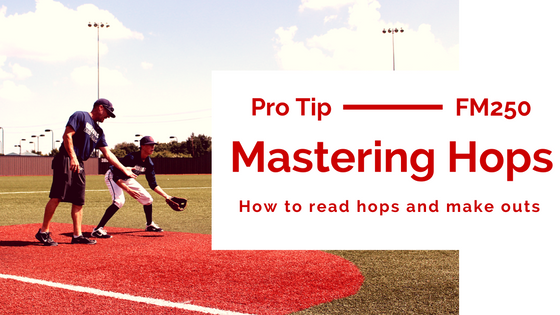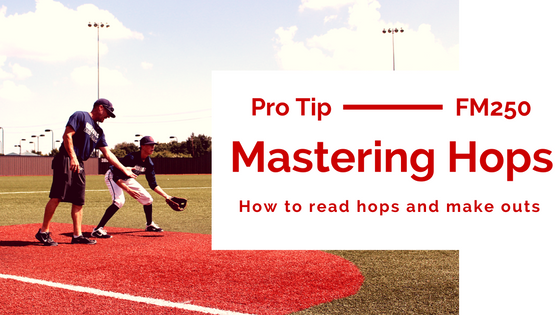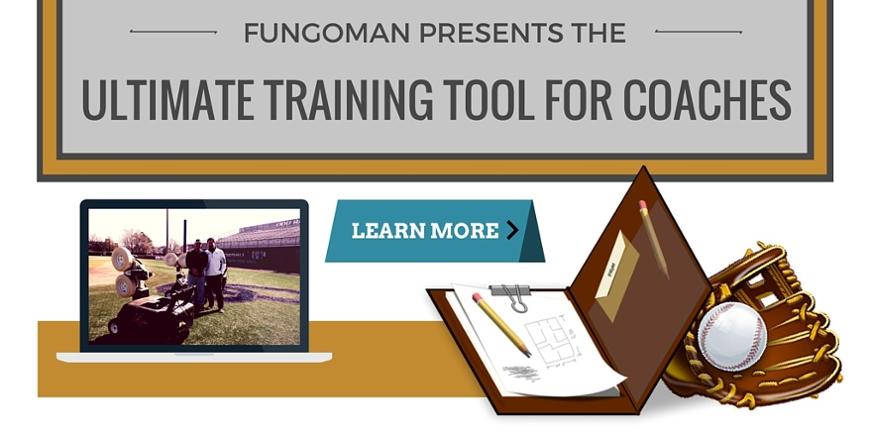
Infielding ground balls is no job for the dazed and confused. Only the quick, sharp, and agile survive the split-second decisions that must be made to get outs. Alright, alright, alriiiiight?
Let's get to the business of fielding ground balls and making sense of ball hops.
We've all been there. We've seen a player over-anticipate the second hop, fumble the ball, give a late throw, or even worse, make an error. So in this post, we will be dissecting ball behavior, addressing common mistakes, and giving fielding notes for the intermediate to advanced player.
The Differing Dynamics of Hops
If all hops were the same, infielding wouldn't be quite the amazing feat that it is, right?
Infielding proficiently demands an acute radar for identifying hops. Infielders recognize the short hop from the long hop, or the dreaded in-between hop from the short or long hops. Infielders are in a sense -- hop connoisseurs.
The infielding skills needed, in addition to basic fielding technique, involve setting up for a good hop and reading the ball's hop accurately. Positioning himself to snag a short or long hop, gives the fielder the best chance of fielding the ball reliably.
An in between hop increases the player's likelihood of getting handcuffed, the ball eating him up, escaping beneath his glove, or attacking his face. Dreaded in between hops don't give the player much time to read the ball's trajectory, thus the reason why we teach players to look for the short or long hop.
The Short Hop
Here's the short of it: short hops bounce a couple inches to a foot away from the fielder's glove, hence the name. The idea is to pick the ball before it has a chance to make a bad hop up or down (making it easier to catch than an in between hop).
The Long Hop
The ball bounces and the fielder waits for the ball to reach it's highest point, come arching down, and field on the downside of the hop. The advantage of a long hop is that you get a long time to read it (easier to catch than an in between hop).
The ball in the air on a long hop is generally easier to catch than a short hop. Players can tell whether the ball is low or high, thus giving the player time to read the hop, and make a split second decision on which ball he'll make a play on.
Common Mistakes
Typically fielders (especially young players) error on the side of over anticipating the ball and charging with hopes of fielding the ball faster, but make an error due to misreading the hop.
On the opposite side of the spectrum, players play it ultra-cool, collected, but fail to make the throw before the batter runs those 90 feet to first.
Young fielders tend to either hang back and take too much time fielding, or charge every ball handcuff themselves. Both are sometimes right and sometimes wrong. The Key is to know when to charge the ball and still get a good hop.
What To Look For
A good fielder learns how to read hops. The more a player sees the ball bounce the better he understands how the ball behaves. The following are a few rules of thumb that help players to start reading the ball faster.
- Angle of the ball off the bat will tell the fielder what the first hop will be like, the first hop indicates how the second hop will behave
- If the ball comes off the bat at a sharp downwards angle at home plate, generally it will bounce with bigger hops.
- If the batter makes contact at a more level bat path, the ball will bounce further out in the grass, and will generally have multiple lower hops or may even be rolling (depending on speed).
- High Chopper/Hopper: hard hit down, the ball will most likely have 1-2 hops
- Hard steep angle: fewer higher hops
- Further out from home plate: more hops, really hard is like a one hop line drive
A video posted by FungoMan (@fungoman) on
Coaching Questions:
With a skilled fungo hitter or FungoMan: create steep 2 hops, where the fielder reads the ball off the bat or machine, and the coach dictates different distances, scenarios, body position and speeds at which they have to get the ball.
The goal: convey the importance of efficient movements, necessary techniques, and keen reading of different hops.
When coaching a player, we like to think that knowledge gained through revelation in experience is much more effective than knowledge given through theory. In effect, these are a few good questions to ask players while doing the drill:
- What hop did you field it on? 1st? 2nd? 3rd?
- Did you catch the short hop, long hop, or in between hop?
- Recognize what hop you fielded, regardless of recording the out. The goal is to strive for great fielding percentage by catching ground balls on a good hop. Don't put yourself in a position for a bad hop.
- One exception: when you are forced to make a play on the run and don't have the opportunity to choose a hop because of a fast runner. This Do or Die Play will be considered a hit if you don't make the play so go hard to make the play and try to pick out the good hop.
- Example situation: player runs up on a short hop. What was the best hop to get that player out on? Even if he makes the out, would he get all 100/100 of the same ball? Or would it be more reliable to make that play laying back for another hop? Or charge the ball more on the short hop? All depends on the ball.
- The point is to encourage fielders to create good habits of consistency while encouraging aggressiveness. What was the most efficient way to field that play?
Fielders should practice both for speed and for consistency. Challenge them to go a couple rounds making the out as fast as they can. Challenge them to make the out in average time without missing one, using the same types of balls on both.
Obviously it's important that infielders field the ground ball with good fielding technique, however, their speed in which they ground the ball and make the throw is equally important. How good is a perfectly fielded ball if you don't get the out?
Develop good fielding technique/position, recognize hops, make decisions on what hop to get based on speed of the ball, runner, and where it's hit. In that order, a player advances his skills and earns a position in the infield.
Here's the truth: coaches will start the player who throws out 8/10 of the average runners over the player who throws out 2/10 of the fastest runners -- every time. This is the reason to encourage players to practice for consistency, build confidence, and improve that fielding percentage.
Let us know what you think about this post! Comment below for subjects you'd like to see addressed in future posts about fielding. Feel free to check out our website for more thoughts from coaches all across the country and at every level of play.



![A Scout of Greatness: Mel Didier [Video Tribute] A Scout of Greatness: Mel Didier [Video Tribute]](https://info.fungoman.com/hs-fs/hubfs/Mel%20Didier.png?width=324&height=160&name=Mel%20Didier.png)


Leave a Comment